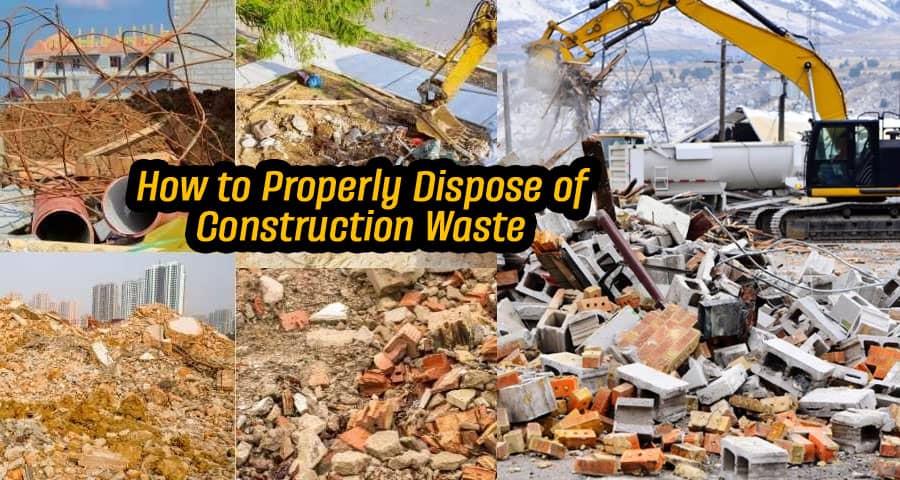How to Properly Dispose of Construction Waste: Sustainable Solutions

Construction projects play a crucial role in shaping our built environment, but they also generate a significant amount of waste. Properly disposing of construction waste is not only a legal requirement in many places but also a fundamental step towards reducing the environmental impact of these activities.
Introduction
Construction waste includes materials ranging from concrete and wood to plastics and metals. Managing these materials responsibly is essential for the environment and the reputation of construction projects.
Categorizing Construction Waste
- Inert Waste: Inert waste, such as concrete, bricks, and stones, doesn't undergo significant physical or chemical changes. It's often recycled as aggregate for new construction.
- Non-Hazardous Waste: Non-hazardous waste includes materials like wood, drywall, and plastics. While not immediately dangerous, they can pose environmental risks in large quantities.
- Hazardous Waste: Hazardous waste includes paints, solvents, asbestos, and other materials harmful to human health and the environment. Specialized disposal methods are essential.
Reduce, Reuse, Recycle
- Minimizing Waste Generation: By carefully planning projects and estimating material needs, construction companies can reduce the amount of waste generated.
- Reusing Materials on Site: Many materials, like lumber and fixtures, can be salvaged and reused on-site or donated to others.
- Recycling Opportunities: Numerous construction materials, including metals, concrete, and some plastics, can be recycled, reducing the demand for virgin resources.
Responsible Disposal Methods
- Landfilling: While landfilling is the least preferred option, it's necessary for some materials. Efforts should be made to divert as much waste as possible from landfills.
- Incineration: Incineration can generate energy but may release pollutants into the air. Advanced incineration technologies help mitigate these impacts.
- Waste-to-Energy Facilities: These facilities use waste as a fuel source to generate electricity. They offer a sustainable alternative to traditional incineration.
Donating to Charitable Organizations
Unused construction materials, such as fixtures and appliances, can be donated to charities or non-profit organizations for reuse.
Compliance with Regulations
- Local Regulations: Construction waste disposal regulations vary by location. Familiarize yourself with local laws to ensure compliance.
- LEED and Green Building Standards: Projects seeking Leadership in Energy and Environmental Design (LEED) certification must follow specific waste management guidelines.
Educating Workers and Contractors
Proper waste disposal starts with education. Training workers and contractors on waste sorting and disposal procedures is crucial.
Conclusion
Effectively managing construction waste requires a combination of responsible practices, proper disposal methods, and adherence to regulations. By minimizing waste generation, reusing materials, and recycling, the construction industry can contribute to a more sustainable future.
FAQs
Can all construction waste be recycled?
Not all construction waste can be recycled due to its composition and local recycling capabilities. However, many materials can be recycled, reducing overall waste.
How can I find local recycling facilities?
Local waste management authorities or environmental agencies often provide information about recycling centers in your area.
What are the penalties for improper construction waste disposal?
Penalties for improper disposal can include fines, legal actions, and damage to a company's reputation. Following regulations is essential.
Is hazardous waste disposal more expensive?
Hazardous waste disposal can be costlier due to the specialized handling and treatment required to ensure safety.
What role do construction companies play in waste management?
Construction companies have a significant role in waste management through responsible material selection, waste reduction strategies, and proper disposal practices.
